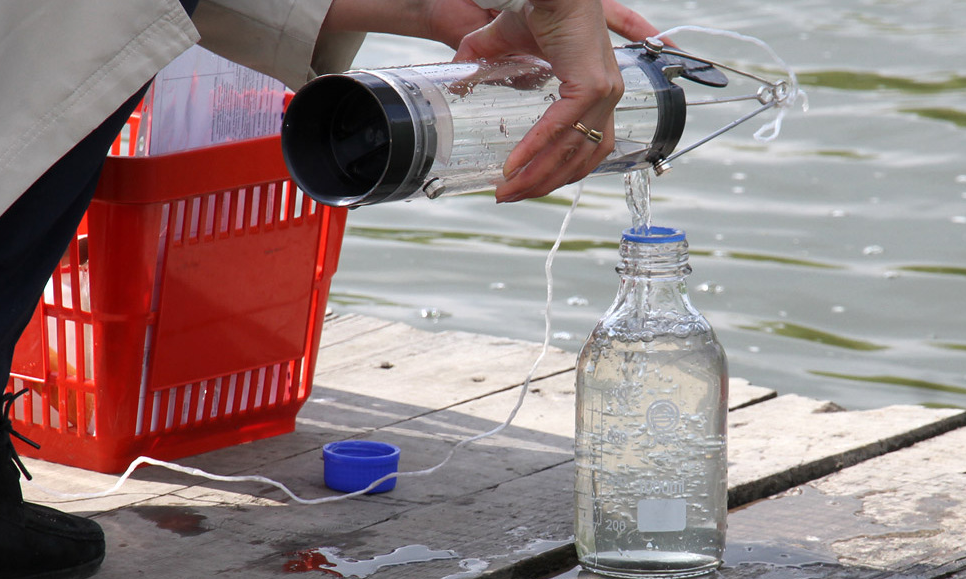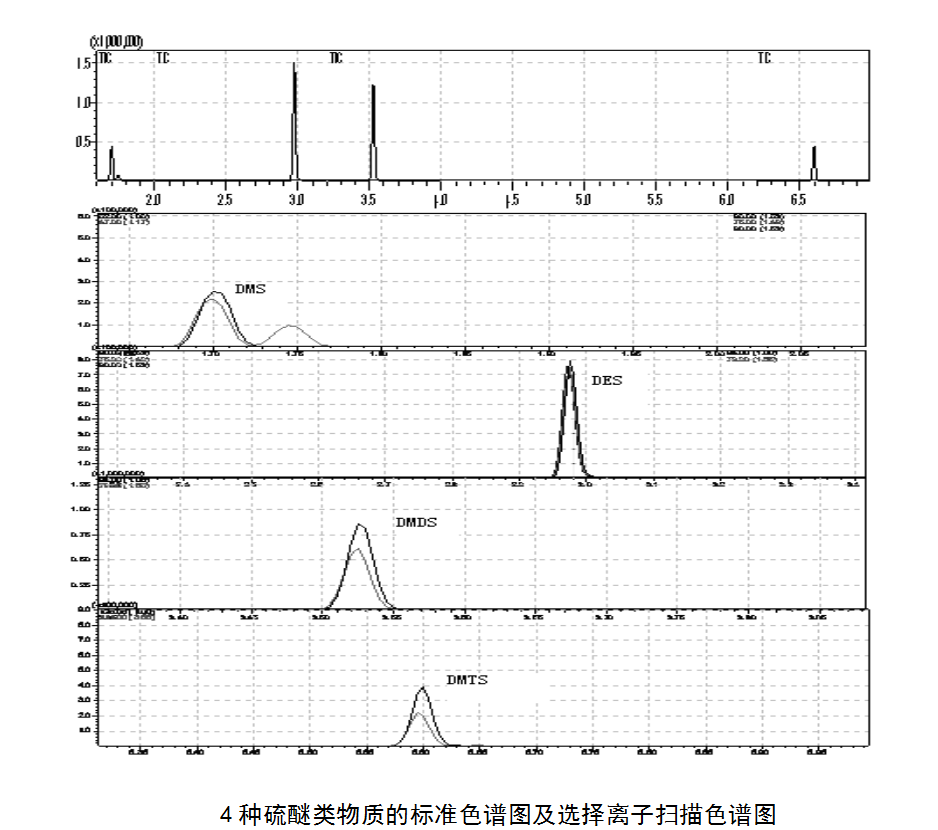The sulfide substances in drinking water can be analyzed by gas chromatography-mass spectrometry. Under certain temperature conditions, the sulfide substances in the sample in the headspace bottle escape into the gas in the upper space of the liquid level and reach dynamic equilibrium between the gas and liquid phases. At this time, the concentration of sulfide substances in the gas phase is directly proportional to its concentration in the liquid phase. The sulfide substances in the gas phase are separated by gas chromatography and detected by mass spectrometer. Methods the retention time and characteristic ions of reference materials were compared qualitatively and quantitatively by external standard method.

Reagents and materials required for water quality testing
1. Laboratory first-grade pure water
2. Methanol: chromatographically pure.
3. Ascorbic acid: analytically pure.
4. Helium: purity ≥99.999%.
5. Standard solution of sulfides: dimethyl sulfide (solvent methanol, 1000mg/L), dimethyl disulfide (solvent methanol, 1000mg/L), diethyl sulfide (solvent toluene, 2000mg/L) ), dimethyl trisulfide (solvent methanol, ρ=1000mg/L), certified reference material.
6. Standard solution for thioethers: 1.0mg/L. Accurately pipette the standard solutions of 10uL dimethyl sulfide, 10uL dimethyl disulfide, 10uL dimethyl trisulfide, and 5uL diethyl sulfide standard solutions to a 10mL volumetric flask, and make up to volume with methanol. Refrigerate below 4°C and store in the dark until use.
Instruments and equipment needed for testing
1. Gas chromatography-mass spectrometer: equipped with headspace autosampler and electron bombardment ion source.
2. Capillary column: Rxi-5Sil (30m×0.25mm×0.25um) or other equivalent column.
3. Sampling bottle: 40mL brown screw-top glass bottle, silicone rubber gasket lined with Teflon, or other similar sampling bottles.
4. Headspace vial: 20mL.
5. Micro syringe: 50uL and 1000uL.
Water Sample Collection Precautions
Collect water samples with sampling bottles. If residual chlorine exists in the water sample, add 25 mg of ascorbic acid to remove residual chlorine. If the sample cannot be analyzed in time, it should be refrigerated below 4°C in the dark, sealed and stored, and the determination should be completed within 24 hours.Test sample preparation
Take 10 mL sample into a 20 mL sample bottle, tighten the bottle cap, and wait for testing.
Blank sample preparation
Substitute laboratory grade pure water for the sample and prepare a blank sample following the same procedure as the sample preparation.
Water sample testing process
Instrument headspace setup conditions
Heating equilibrium temperature: 80 ℃; Sampling needle temperature: 150 ℃; Transfer line temperature: 150 ℃; Heating equilibrium time: 20 min; Pressure equilibrium time: 2 min.Chromatographic instrument setup conditions
Heating program: 40 °C for 2 min, 15 °C/min to 200 °C, hold for 2 min.Carrier gas: Helium (4.4).
Column flow: 2 mL/min.
Injection method: split injection with a split ratio of 50:1.
Instrument mass spectrometry setting conditions
Ionization energy: 70 eV; Ion source temperature: 230 ℃; Interface temperature: 280 ℃; Qualitative mode: full scan, mass range: 50 amu~650 amu; Quantitative mode: Selected ion scan, quantitative ions and reference ions can be compared Table of quantitative ions and reference ions for 4 sulfides.
Plotting the calibration curve
This method uses the external standard method for quantification, and the calibration series solution is prepared: use a micro syringe to accurately pipette 12 uL, 50 uL, 100 uL, 200 uL, 400 uL, 600 uL to 10 mL volumetric flasks, respectively, and determine with high-purity water. Compatible to the scale, the calibration series concentrations of 4 kinds of thioethers are: 1.2 ug/L, 5.0 ug/L, 10.0 ug/L, 20.0 ug/L, 40.0 ug/L, 60.0 ug/L, transfer to 20 mL headspace vials, according to the order of concentration from low to high, on the machine to measure.Detection steps
1. Use the autosampler to inject the sample, and the injection volume is 1 mL.2. Follow the same procedure as the measurement calibration series to measure the sample.
3. The standard chromatograms and selected ion chromatograms of the above four thioethers can refer to the following figure.

The qualitative results of the content of thioethers in the water samples are based on the retention time and characteristic ions of the target compounds in the samples. Quantitative results can be characterized according to the retention time and characteristic ions of target compounds in the sample.



